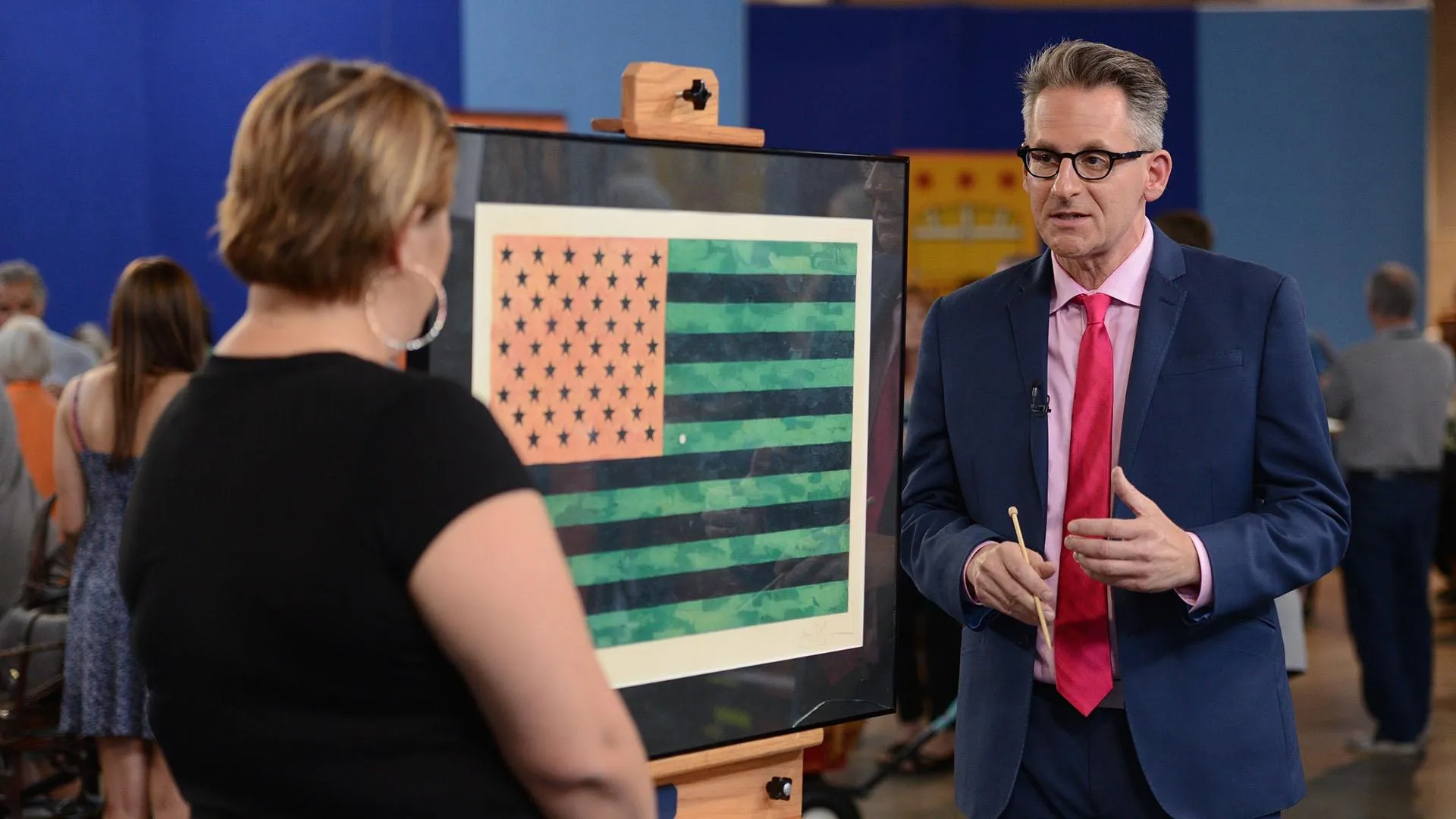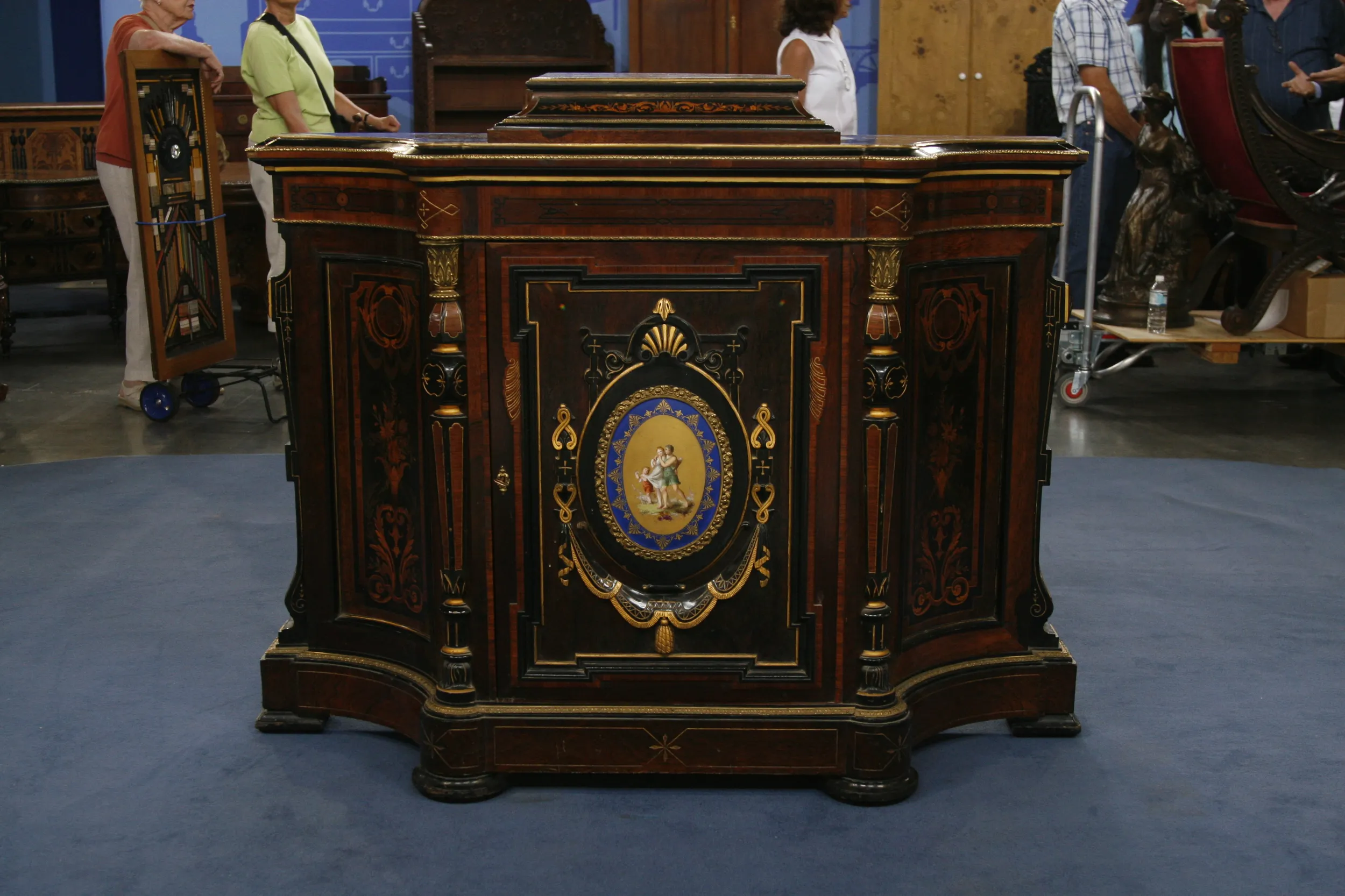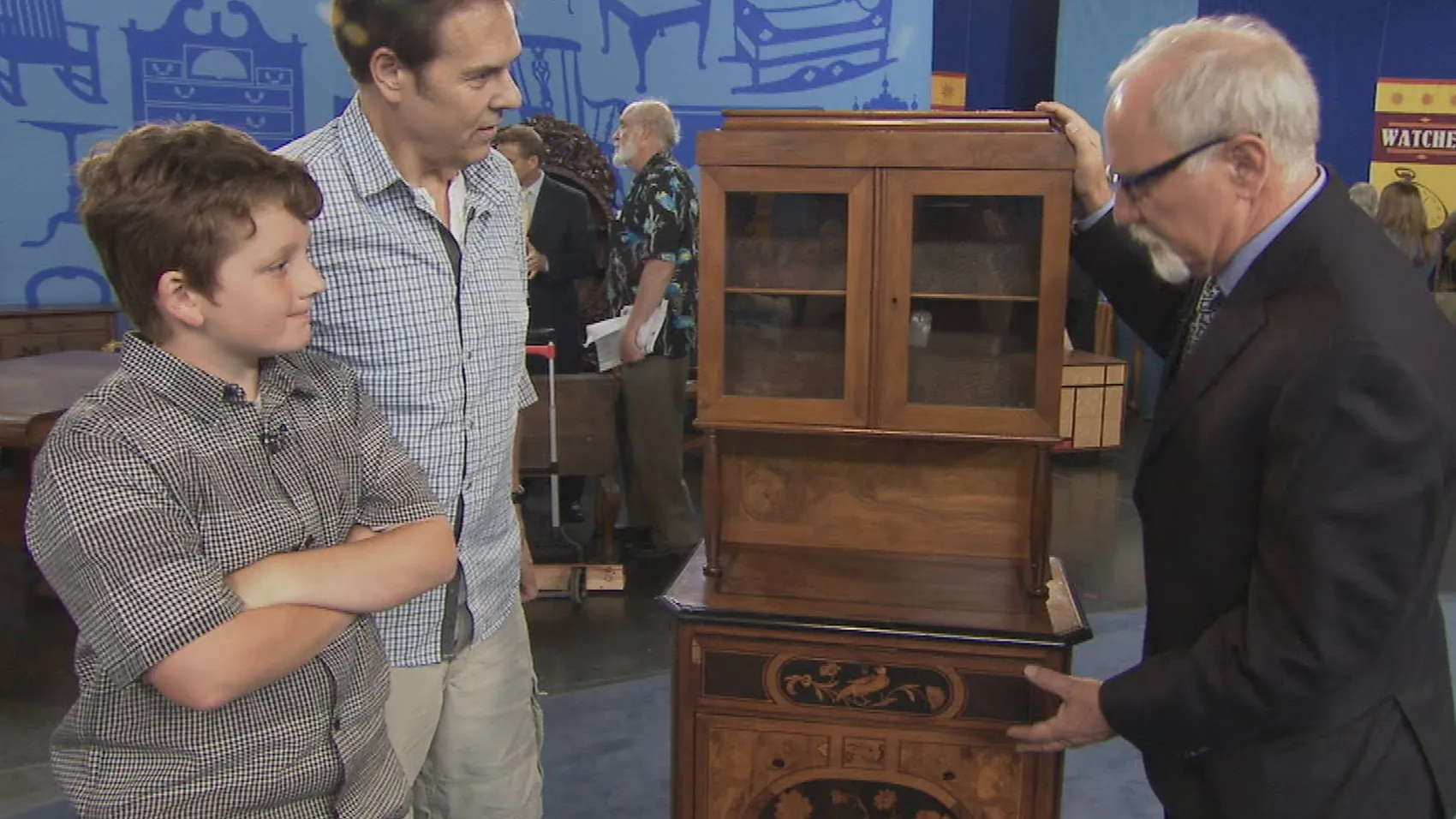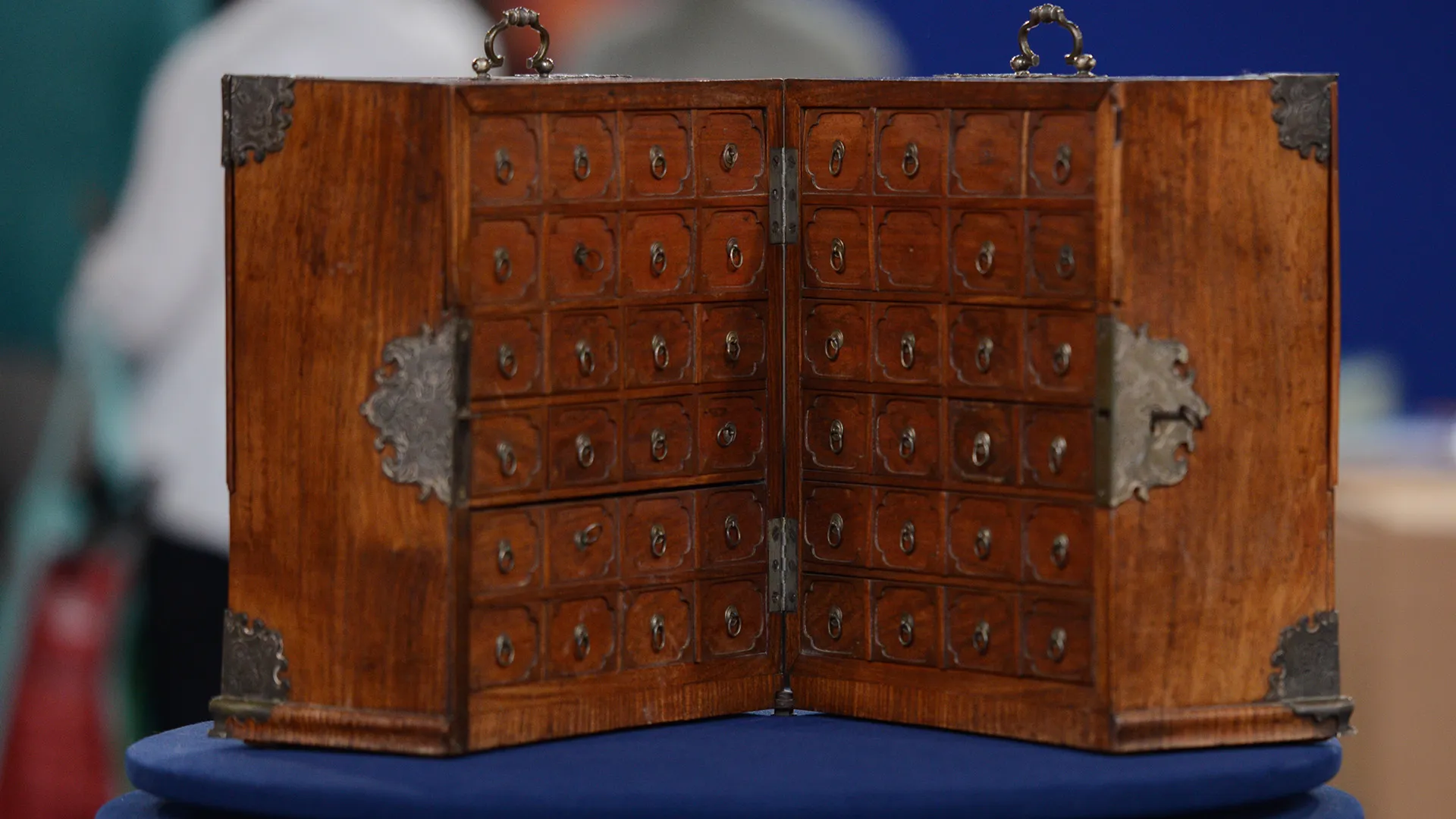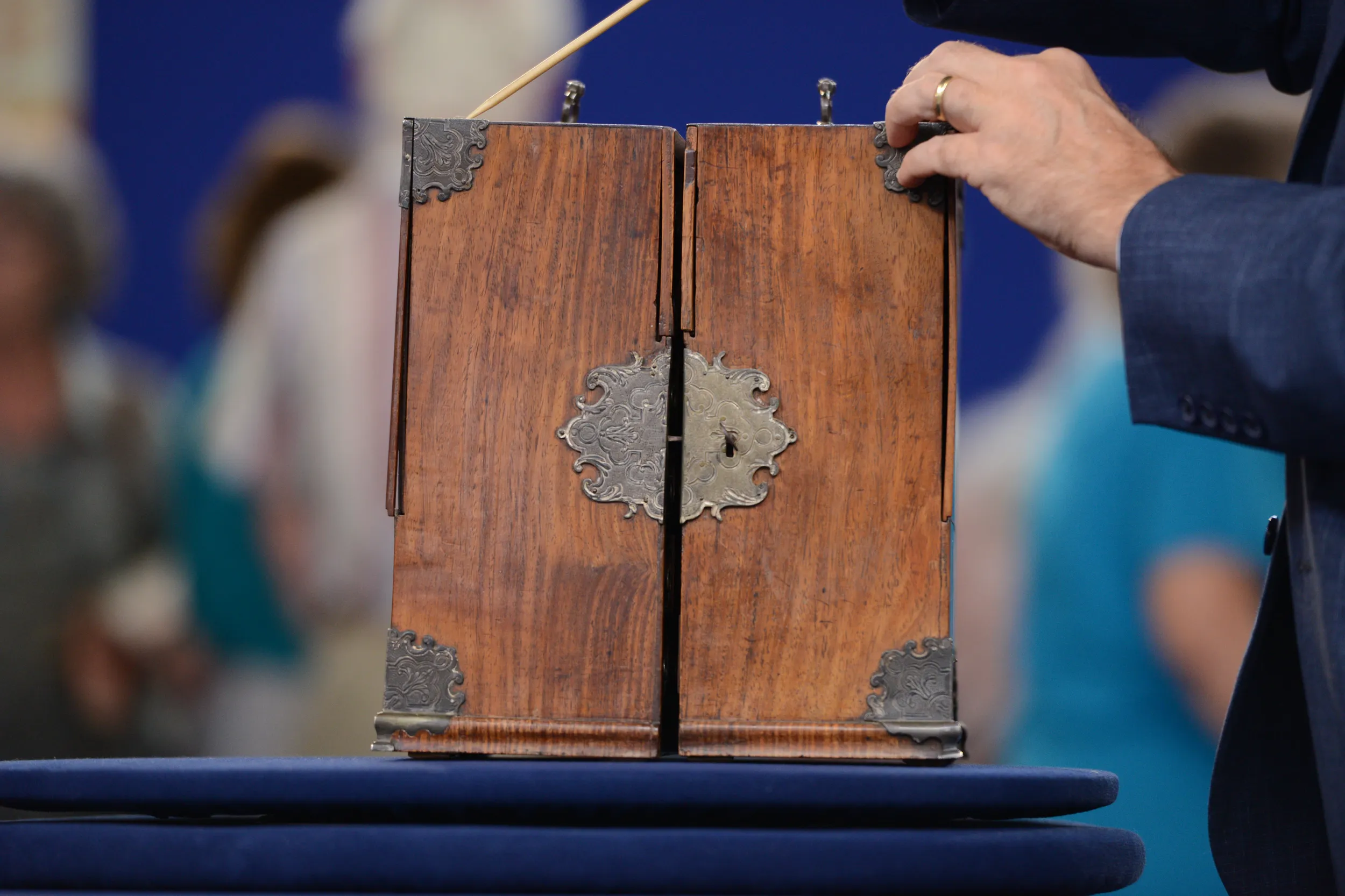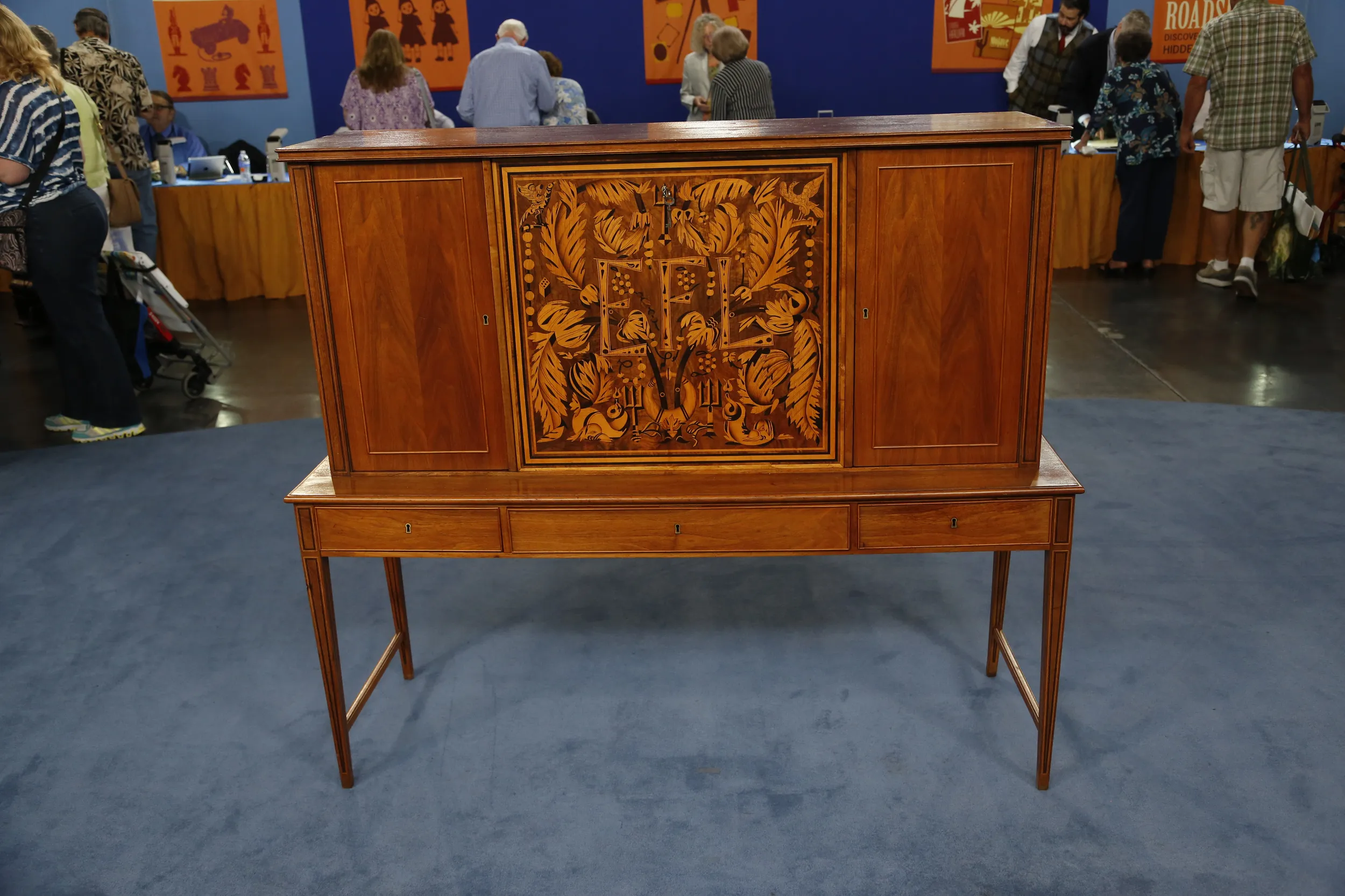GUEST: It was bequeathed to me by a friend. I believe it's a tansu, based on the design. But what I love about this chest is all its secret compartments. And I design and build contemporary furniture and contemporary tansu, and I build secret compartments into everything that I build. The card that came with it said it was a 1740s Queen Anne apothecary chest, purported to be used for nobility.
APPRAISER: One can pull out one of these and see that you've got this terrific little box, but it's really a visual pun.
GUEST: Yes.
APPRAISER: Because most of these are not, in fact, drawers; they are other things.
GUEST: They are other things.
APPRAISER: They're sliding doors, or they are drawers designed to look like four small drawers, but in fact, they're broken up into compartments that have all kinds of other things going on.
GUEST: Right.
APPRAISER: And that's because this was made for someone who was a pharmacist. It actually hinges together and forms a box, and you've got this wonderful plate here on the front, and the corners are reinforced with these metal plates. These are in a Baroque, kind of Rococo design, which is a European design. We're going to just look at the whole exterior, and what do we see? The side that looks like it's one solid panel in fact slides open. You had said tansu, which is a type of furniture used in Japan and Korea. This actually is made of a wood that is not teak, not padauk. It's a wood called huanghuali. Huanghuali was a wood that was used in Chinese cabinetry work.
GUEST: Oh, okay.
APPRAISER: From an early period of time during the Ming dynasty and the Qing dynasty up into the 18th century. It wasn't really used by any other cultures in Asia.
GUEST: Okay.
APPRAISER: That and this hinged box form is a Chinese form. This was made by a Chinese cabinetmaker probably between 1720 and 1750. This was made for somebody who was a well-to-do individual. This was likely made in Southern China, probably in what was then called Canton. And it was made for someone who was working there or brought it back from there to Europe. And stylistically, I think that individual is likely Dutch.
GUEST: Really?
APPRAISER: And I base that on the style of these mounts. What a terrific object.
GUEST: Wow, thank you.
APPRAISER: This is so, so fun. And the fact that it's miniaturized really makes it appealing, because it's portable and small.
GUEST: Right.
APPRAISER: It's worth, I think, conservatively, $8,000 to $12,000 at auction.
GUEST: Oh, wow. Wow. (chuckles) That's amazing. (voice breaking) I can't believe, such a gift!
APPRAISER: If they were Chinese mounts, not these European mounts, this would be worth $50,000 to $70,000 at auction.
GUEST: Oh, wow.

